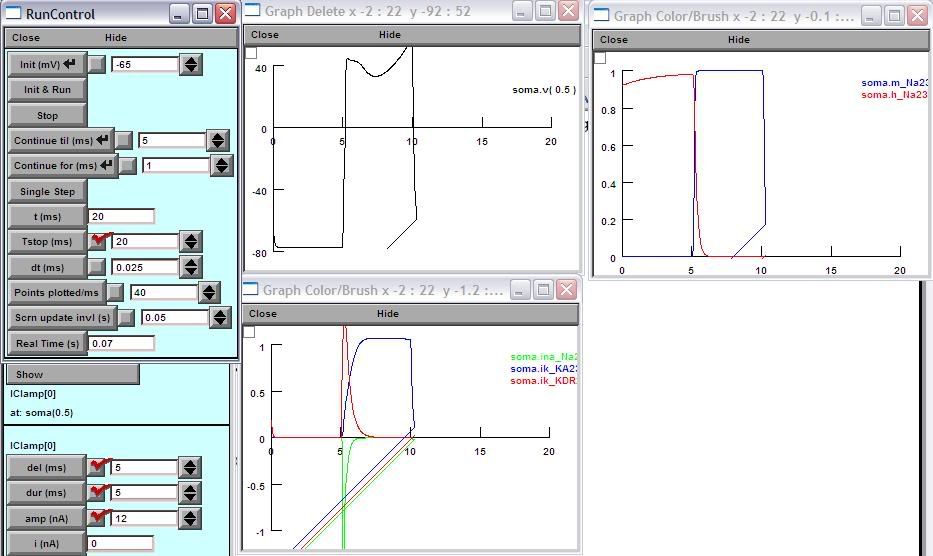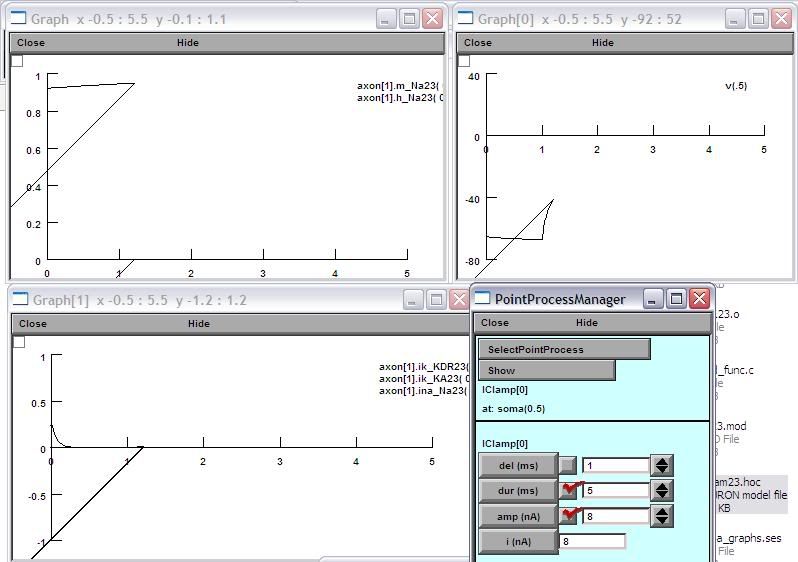I created some ion channels using NMODL, compiled them into a dll, and then inserted them into a simple soma created using HOC. Then, I applied an input current. Depending on the amplitude of current injected, the data lines on the graphs for voltage, current, and state begin normally, but then, when the current is applied, it flies off to the lower left hand side of the graph window at a 45 degrees angle, as shown in the image below. What is going on? Is there some sort of convergence problem? This image is already taken with a current amplitude value that causes the least problem. With different current values, it is even worse.

When I inserted these channels into the pyramidal cell I'm trying to simulate, the problem is much worse since the currents/states aren't correct at all, as seen below:

Do you know what could be causing this? I'm relatively new to Neuron and NMODL, so I'm not sure what could be causing this.
Thanks so much for your help.
FL